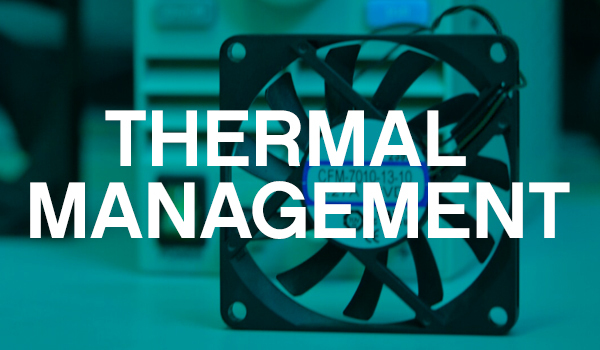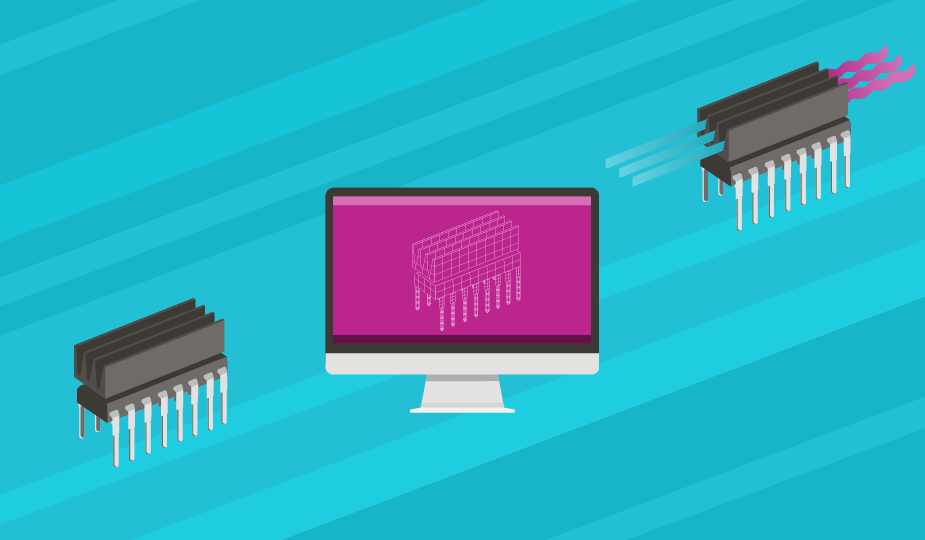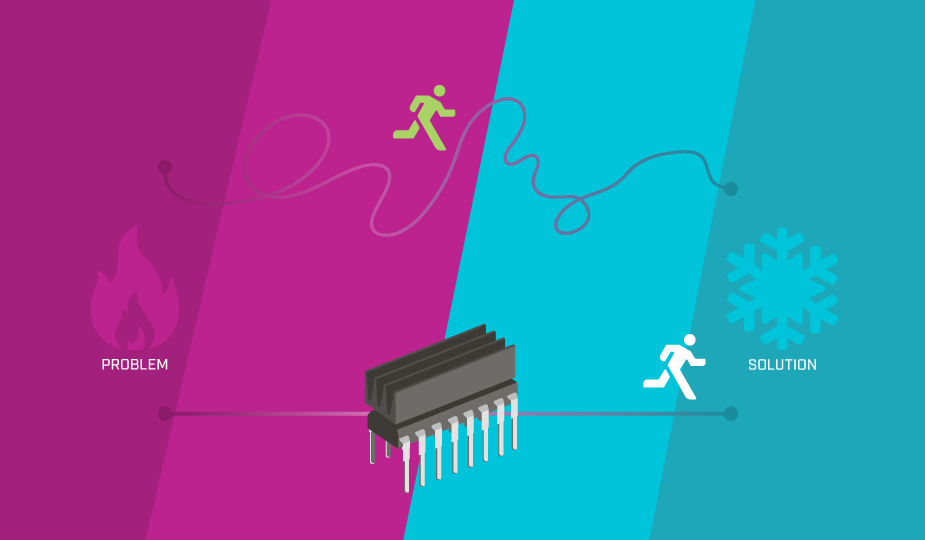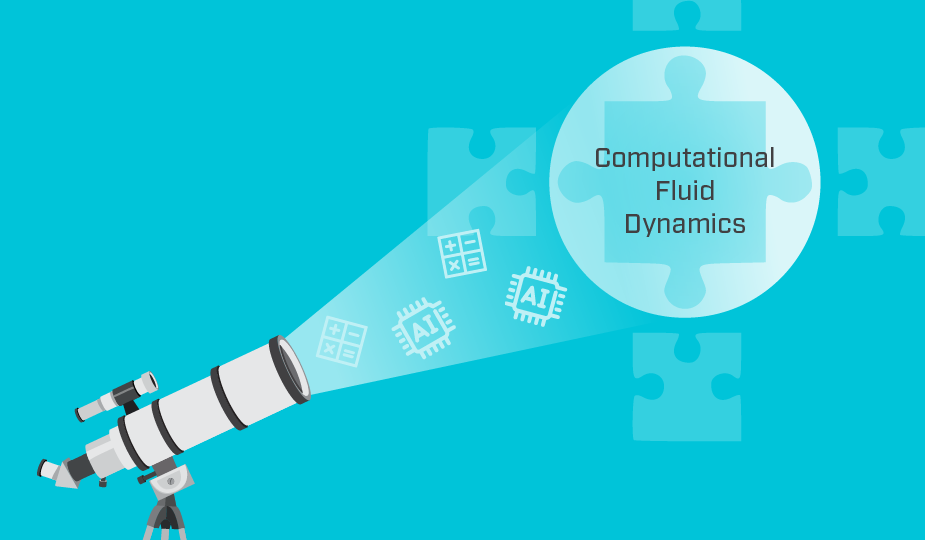数値流体力学とは?
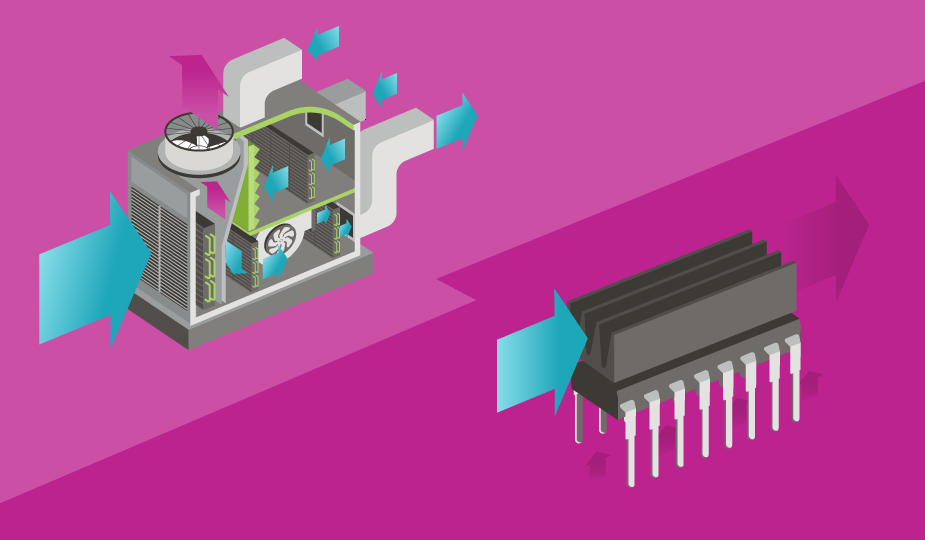
製品やシステムの熱伝達や冷却を扱う場合、推測や希望は選択肢ではありませんが、試行錯誤は高価で非効率な方法です。熱を流体として処理することによって、熱の動きを正確かつ実用的にモデル化する方法があります。数値流体力学(CFD)は、プロジェクトチームがエンジニアリング問題に対するソリューションを検討して評価し、実際のリソースを投入する前にリスクを軽減する強力な解析ツールです。
数値アルゴリズムを利用することで、CFDは流体力学と熱伝達を制御する複雑な非線形の部分微分方程式を解きます。このアプローチにより、物理システムの空間的および時間的側面を正確に表す三次元モデルの作成が可能になり、実験的分析に関連する費用なしで非常に現実的なソリューションが得られます。
数値流体力学が熱解析に使用される場合、流体と固体との間の熱伝達の計算および周囲の流体内の対流の評価を可能にします。CFDでは、三次元(3D)流体の動きと熱伝達をシミュレーションする数値アルゴリズムが採用されており、熱解析を容易にします。CFD熱解析は、伝導、対流、放射線などの熱伝達方法の影響を流体流シミュレーションに効果的に組み込んでおり、現実的かつ包括的な結果をもたらします。以下の計算流体力学(CFD)シリーズによる熱シミュレーションのその他のブログ記事もご覧ください。
ほとんどの数値流体力学ソフトウェアは一般的で、熱だけでなく気流、位相変化などのモデリングにも使用されますが、一般的な熱伝達、より具体的には電子機器内の熱流の両方に使用できる特定のCFDソフトウェアがあります。より特定のニッチに焦点を当てることで、このソフトウェアは対処するオプションが少ないため、セットアップとソリューションを簡素化します。例えば、特定のソフトウェアには、集積回路パッケージ、回路基板、ヒートシンク、ヒートパイプ、ファンなどを正確にモデル化する機能が特別に組み込まれています。一例として、このソフトウェアは、計算するシステム抵抗に基づいてファンの動作点を見つけることができ、無駄になることなくデバイスを適切に冷却するための気流の適切なバランスを確保します。
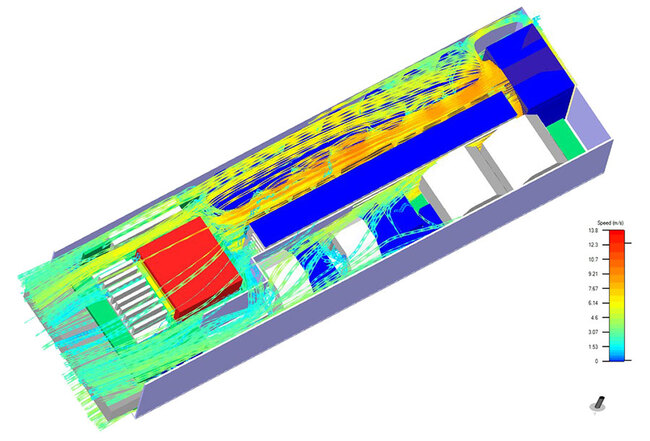
CFD熱解析シミュレーションにより、その他の貴重な情報を抽出し、以下を含むさまざまな要因を正確に予測することもできます。
- エアフローフィールドとパターン
- 熱流束率
- ホットスポット
- 温度分布
- 熱伝達率
設計者はこのデータを活用して、効果的な温度管理ソリューションを開発し、設計の信頼性と安全性を確保できます。これらの重要な熱パラメータに関する洞察により、設計者は、熱放散を最適化し、冷却戦略を改善し、システムの性能や寿命を損なう可能性のある熱の問題を防止するために、情報に基づいた意思決定を行うことができます。
数値流体力学はどのように機能しますか?
数値流体力学は、質量の保全、勢いの保全、エネルギーの保全という3つの基本的な物理方程式に基づいています。これらはNavier-Stokes方程式とも呼ばれ、モデルがこれらの方程式に基づいて正しく設定され、モデルがソリューション上で収束する場合、モデルが物理法則を満たし、結果が信頼できることを確認します。
標準的なCFD解析では、通常、3つの主要なプロセスに従います。しかし、これらの主要プロセスの前後に発生する可能性のある追加の活動を検討して、包括的な理解を提供する価値があります。
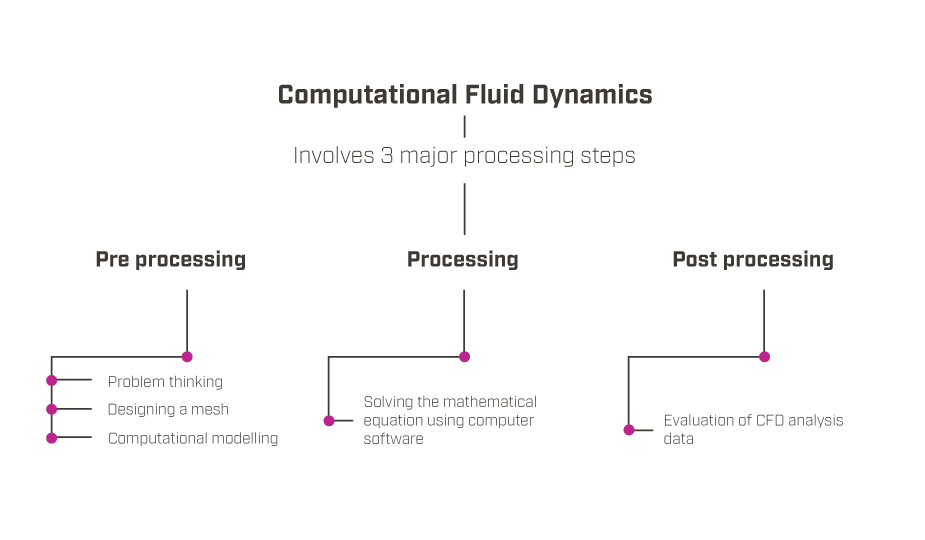
数学的モデリングのフェーズ
CFD解析を実行する前に、問題は部分的な差分問題として既に存在している必要があります。この初期フェーズは、CFD解析の前にあり、その後のステップの基礎となるため、不可欠です。
前処理段階
前処理段階では、CFDソフトウェアは部分微分方程式を代数方程式に変換します。このステージには、モデルが三角形や四辺形などの構造化または非構造化要素に断片化されるメッシュ生成の重要なプロセスも含まれます。さらに、フローフィールド内のメッシュ要素のサイズは、有限要素法を使用して精緻化され、システムの正確な表現および効果的な分析を確実にします。
CFDシミュレーションソフトウェアを使用したステージの解決
解決フェーズでは、CFDシミュレーションソフトウェアを使用して、前処理フェーズで定式化された数式を解きます。CFDフローシミュレーションの計算時間は、次のような要因によって異なる場合があります。
- コンピュータハードウェア
- ベクトル化、並列化
- データ構造
- 中止基準
- メッシュサイズ、メッシュ品質、時間
- 使用するプログラミング言語
上記の要因に加えて、エンジニアや設計者は、CFD解析に影響を与える可能性のあるさまざまな他の変数やパラメータを考慮する柔軟性があります。
後処理段階
後処理段階には、シミュレーションからのデータの抽出と解釈が含まれます。この段階で、アナリストは調査結果に基づいてさらなるテスト、最適化、または再設計の必要性を結論付けます。結果は、画像、グラフ、表を使用して提示することができ、解析結果の効果的な伝達を容易にします。
熱伝達と冷却効率を最適化するための結果の活用
CFD熱解析の全プロセスを経て、エンジニアと設計者は、設計に包括的な変更を加えるために必要な情報を与えられます。この解析により、次の3つの基本的な熱伝達プロセスすべてにおいて、製品設計における熱伝達特性を決定できます。熱伝導、対流、放射の3つの方法があります。CFDを活用することで、エンジニアは流体の流れと熱伝達を最適化しながら、空力性能を高める正確なソリューションを得ることができます。CFD解析から得られる結果は、現在の設計内の既存の熱伝達および冷却システムの欠陥を特定する上で有益であり、エンジニアは改善を実施できます。この包括的なアプローチにより、エンジニアは温度管理戦略を微調整し、効率的な熱放散、冷却性能の向上、システム全体の信頼性の向上を実現できます。
製品設計における熱ホットスポットへの対応
CFDシミュレーションは、特に熱ホットスポットの検出に課題をもたらす複雑なフローシステムを扱う場合、物理実験と比較して精度と包括的な洞察を強化します。これらのホットスポットは、周辺よりも高い温度の局所領域を表します。これらのホットスポットの軽減を無視すると、熱が継続的に蓄積し、システムの故障、誤動作、製品の損傷などの深刻な結果につながる可能性があります。このような結果は、電子製品の寿命を危険にさらすだけでなく、ユーザーの安全にもリスクをもたらします。
CFD熱シミュレーションを利用することで、熱分布に関する貴重な洞察を得ることができ、製品設計内の潜在的な熱ホットスポットを特定できます。これらの特定の領域が特定されると、熱伝達設計を強化し、それらの領域における熱蓄積のリスクを効果的に軽減するために、的を絞った改善を行うことができます。その結果、最適化されたシステムは損傷を受けにくくなり、寿命が延びます。
仮想テストと最適化によるコストと時間の節約
エンジニアは常に改良された電子製品の開発に努めていますが、大量生産の最終承認は、多くの場合、実際のテスト結果に依存します。現代の電子製品の設計プロセスは、典型的には複雑でコンパクトであり、単一のプロトタイプを製造するために時間とお金のかなりの投資を必要とします。プロトタイプが完了すると、熱歪み試験を受けて、その耐久性、物理的特性、および実際のアプリケーションへの適合性を評価します。これらのテストを正常に完了すると、大量生産が承認されます。ただし、試作品が故障した場合、投資は総損失となります。
CFDは、現実世界の環境をシミュレートし、電子製品の仮想モデルをテストする機能を提供します。CFDを使用して、設計上で熱伝達分析を実行し、潜在的なエラーを特定し、さらなる分析のためにモデルを改良し再構築する機会を提供することができます。CFDシミュレーションから得られた結果は、非常に正確であり、エンジニアにフローパターンの視覚的表現を提供し、物理実験によって達成できるものを超える複雑なフローシステムを包括的に理解することができます。この反復プロセスは、物理的なプロトタイプの必要性を排除し、多大な時間とコストの投資に関連するリスクを低減し、研究者が大量製造に適した最適化された製品を作成できるようにします。
概要
数値流体力学は、熱の動きを定量化して予測する強力なツールであり、設計を通じて迅速かつ安価な反復を可能にします。先行作業とコストにより、一部の中小企業はモデルを作成し、シミュレーションをセットアップするためのリソースを躊躇するかもしれませんが、長期的な利点はほぼ常に価値があります。モデルとシミュレーションを更新して複数の反復を実行し、数百ではないにせよ、数十種類の異なる構成をすばやく比較するのは、比較的簡単です。この科学とソフトウェアがどのように機能するかに関する基本的な原則を十分に理解することで、ユーザーはこの科学とその実装の期待と限界を知ることができます。適切なソフトウェアと高品質のモデルにより、エレクトロニクスおよび電気エンジニアは、設計をクールに保つための理想的なソリューションを作成できます。ご質問がある場合は、Same Skyの熱設計サービスと温度管理コンポーネントをご利用ください。
